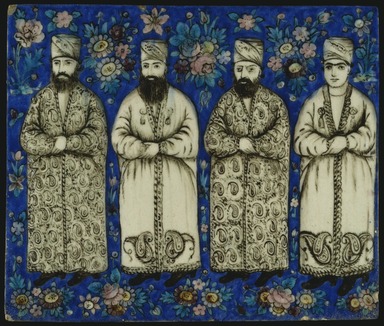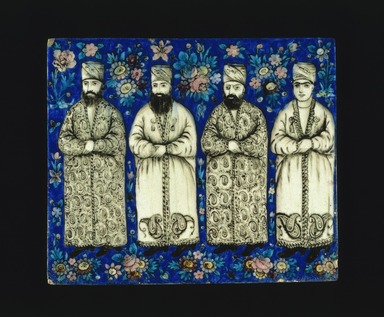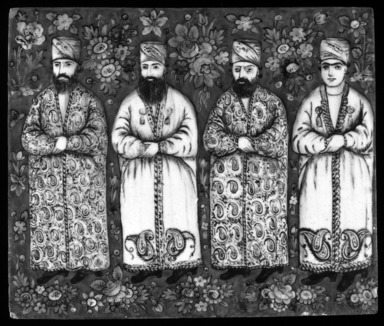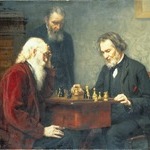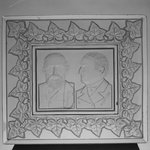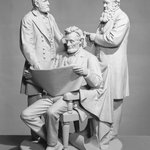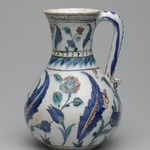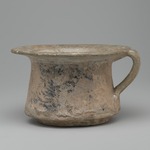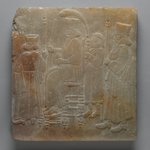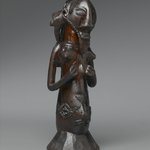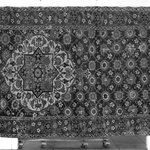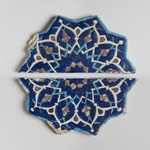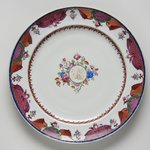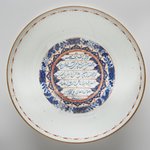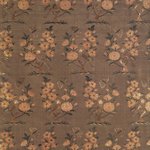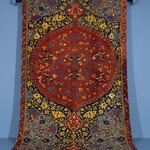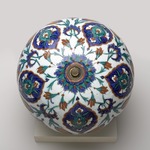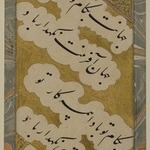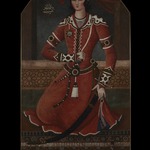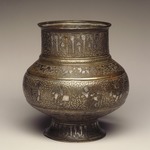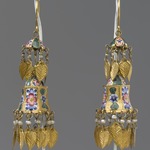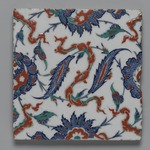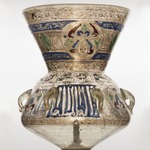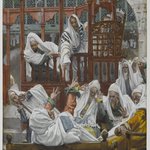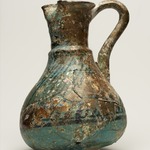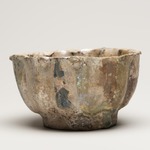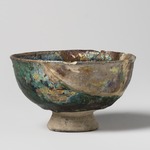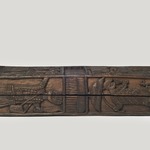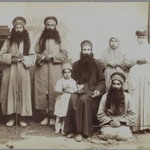Molded Tile
Arts of the Islamic World
On View: Arts of the Islamic World, 2nd floor
This molded tile depicts four grandees associated with the court of Nasir al-Din Shah (reigned 1848–96) of the Qajar Dynasty (1785–1925). They stand at attendance with their hands discreetly folded, demonstrating the formality of court ritual during the period. Used as part of a decorative ensemble in a princely mansion or palace, this tile represents the high level of technical skill that ceramic artists achieved during the Qajar period. The figures are rendered in grisaille, a technique in which shades of black, white, and gray are used exclusively, and they hover amid floral sprays and individual blossoms on a monochrome cobalt-blue background. The color bleeds very little into the black-and-white figures, indicating the artist's control in glazing and firing processes.
MEDIUM
Ceramic; fritware, painted in black, cobalt blue, turquoise, manganese purple, pink, and yellow under a transparent glaze
DATES
second half of 19th century
PERIOD
Qajar Period
DIMENSIONS
13 3/4 x 1 3/16 x 11 3/4 in. (34.9 x 3 x 29.8 cm)
(show scale)
ACCESSION NUMBER
1991.2
CREDIT LINE
Hagop Kevorkian Fund
PROVENANCE
Prior to 1987, provenance not yet documented; before 1987, acquired in France by an unidentified French collector; May 4, 1990, purchased at Hôtel Drouot, Paris, lot 17 by the Brooklyn Museum.
Provenance FAQ
CAPTION
Molded Tile, second half of 19th century. Ceramic; fritware, painted in black, cobalt blue, turquoise, manganese purple, pink, and yellow under a transparent glaze, 13 3/4 x 1 3/16 x 11 3/4 in. (34.9 x 3 x 29.8 cm). Brooklyn Museum, Hagop Kevorkian Fund, 1991.2. Creative Commons-BY (Photo: Brooklyn Museum, 1991.2_SL3.jpg)
IMAGE
overall, 1991.2_SL3.jpg. Brooklyn Museum photograph
"CUR" at the beginning of an image file name means that the image was created by a curatorial staff member. These study images may be digital point-and-shoot photographs, when we don\'t yet have high-quality studio photography, or they may be scans of older negatives, slides, or photographic prints, providing historical documentation of the object.
RIGHTS STATEMENT
Creative Commons-BY
You may download and use Brooklyn Museum images of this three-dimensional work in accordance with a
Creative Commons license. Fair use, as understood under the United States Copyright Act, may also apply.
Please include caption information from this page and credit the Brooklyn Museum. If you need a high resolution file, please fill out our online
application form (charges apply).
For further information about copyright, we recommend resources at the
United States Library of Congress,
Cornell University,
Copyright and Cultural Institutions: Guidelines for U.S. Libraries, Archives, and Museums, and
Copyright Watch.
For more information about the Museum's rights project, including how rights types are assigned, please see our
blog posts on copyright.
If you have any information regarding this work and rights to it, please contact
copyright@brooklynmuseum.org.
RECORD COMPLETENESS
Not every record you will find here is complete. More information is available for some works than for others, and some entries have been updated more recently. Records are frequently reviewed and revised, and
we welcome any additional information you might have.
